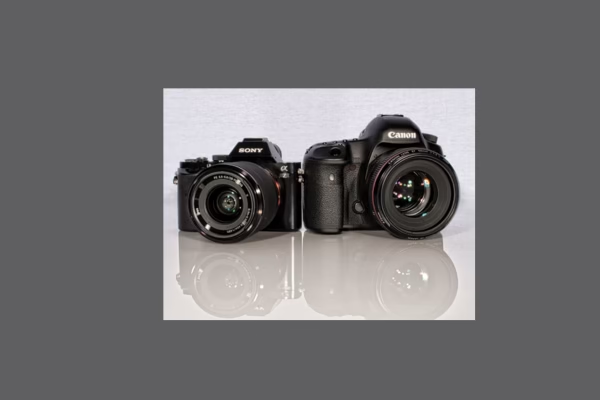Henri Cartier-Bresson: The Master of the Decisive Moment
Henri Cartier-Bresson (1908–2004) was one of the most influential photographers of the 20th century, often regarded as the father of modern photojournalism. His innovative use of the 35mm Leica camera, his concept of the “decisive moment,” and his ability to seamlessly merge art with documentary photography transformed the medium. Through his work, Cartier-Bresson not only chronicled history as it unfolded but also elevated photography to an expressive and poetic art form. His legacy continues to shape the field, inspiring photographers worldwide.
Early Life and Artistic Beginnings
Born on August 22, 1908, in Chanteloup-en-Brie, France, Cartier-Bresson was raised in an affluent family. Initially drawn to painting, he studied under the Cubist painter André Lhote, whose teachings on composition and form later influenced his photographic style. However, his artistic path changed after discovering the work of photographer Martin Munkácsi. Munkácsi’s dynamic, spontaneous style inspired Cartier-Bresson to abandon painting in favour of photography as his primary medium.
The Birth of the Decisive Moment
Cartier-Bresson’s most significant contribution to photography was his concept of the “decisive moment”—the precise instant when all elements within the frame align perfectly to create a powerful and visually compelling image. He believed that a photographer must anticipate these moments and capture them with precision. His book Images à la Sauvette (1952), published in English as The Decisive Moment, articulated this philosophy through a collection of images that embodied spontaneity and impeccable composition.
He relied on an intuitive understanding of light, composition, and human behaviour. Preferring to work with a small, unobtrusive Leica camera with a 50mm lens, he moved discreetly to capture natural, unposed moments. Unlike many of his contemporaries, he avoided cropping or altering his images, believing that the original composition was paramount.
Photojournalism and Magnum Photos
In 1947, Cartier-Bresson co-founded Magnum Photos, a pioneering cooperative agency that allowed photographers greater creative control over their work. Alongside Robert Capa, George Rodger, David Seymour, and William Vandivert, he established a new standard for documentary photography. Magnum became a platform for photographers dedicated to capturing world events with authenticity and artistic integrity.
Cartier-Bresson traveled extensively, documenting some of the most significant events of the 20th century. He photographed the liberation of Paris during World War II, the assassination of Mahatma Gandhi in India, the Chinese Revolution, and the fall of the Kuomintang. His ability to capture raw, unguarded moments made him one of the most respected photojournalists of his time.
Iconic Works and Lasting Influence
Among Cartier-Bresson’s most famous images is “Behind the Gare Saint-Lazare” (1932), which captures a man leaping over a puddle, perfectly suspended in mid-air. This photograph epitomizes his “decisive moment” philosophy, where movement, composition, and emotion align harmoniously. Another notable image is his portrait of Mahatma Gandhi’s funeral, a deeply evocative documentation of a historic event.
His talent for capturing the essence of his subjects extended beyond political and historical events. His portraits of artists and intellectuals such as Pablo Picasso, Henri Matisse, and Jean-Paul Sartre reveal a deep understanding of human nature, often depicting his subjects in their natural environments rather than in posed settings.
Impact on Photography
Cartier-Bresson’s contributions to photography were ground-breaking. He blurred the boundaries between journalism and fine art, demonstrating that documentary photography could be both narratively rich and visually striking. His emphasis on composition and timing remains fundamental in photography today.
His influence extends to generations of photographers, including Sebastião Salgado, Steve McCurry, and Alex Webb, who have adopted elements of his candid, unobtrusive style. His legacy is evident in contemporary photojournalism, where capturing the decisive moment remains a guiding principle.
Later Life and Final Years
Despite his enormous success, Cartier-Bresson gradually withdrew from photography in the 1970s, returning to his first artistic passion—drawing. He believed photography had become overly commercialized and found greater fulfilment in sketching. Nevertheless, his photographic legacy continued to be recognized worldwide. In 2003, he and his wife, Martine Franck, established the Henri Cartier-Bresson Foundation to preserve his work and support the study of documentary photography.
He passed away on August 3, 2004, at the age of 95, leaving behind an enduring archive of images that continue to inspire and define the world of photography.
Conclusion
Henri Cartier-Bresson was more than a photographer—he was a visionary who saw photography as a means of capturing life’s fleeting moments. His philosophy of the decisive moment, combined with his mastery of composition and storytelling, transformed photography into an art form of unparalleled depth and significance. Through his images, he provided a unique perspective on history, human nature, and the beauty of everyday life. His legacy endures, reminding photographers and visual storytellers of the power of intuition, patience, and the relentless pursuit of the perfect moment.

